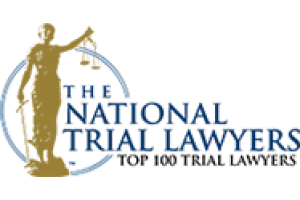Myelopathy
VIRGINIA MYELOPATHY INJURY LAWYER
Compression of the spinal cord causes injury to the long tracts of nerves inside the spinal cord that act like a telephone cable receiving and sending signals to and from the brain to our body. Spinal cord compression happens when the spinal cord is pressed or squeezed. This condition is called “myelopathy” (myel = spinal cord; opathy = disease). Most cases of spinal cord compression involve the cervical spine, the neck area, and is called “cervical myelopathy.” Myelopathy is not as devastating as spinal cord injury (SCI) which causes paraplegia and quadriplegia. Myelopathy is an “incomplete” lesion of the spinal cord, and is often caused by auto accidents.
Symptoms Of Cervical Myelopathy
Brad was in a Manassas, Virginia car accident. His doctor told Brad that his symptoms suggested myelopathy.
Symptoms of cervical myelopathy include:
- pain in the neck sometimes radiating down the arm
- altered sensation in the arms
- weakness of the arms and hands
- difficulty buttoning a shirt or writing
- clumsiness
- weakness and numbness in the legs
- difficulty walking – sometimes with spastic gait
- loss of bladder and bowel control
MRI Of The Cervical Spine
An MRI of the cervical spine takes a three dimensional picture of the spine. If a person has cervical myelopathy, an MRI will show compression of the spinal cord. It also tells the physician the exact level of compression. For example, if a patient has cervical myelopathy at the C7 level, an MRI of his spine would reveal the source of the compression, such as a central herniated disc or a large bone ridge or bone spur squeezing the spinal cord at C7. This condition is called “C7 myelopathy” because it describes the exact location where the spinal cord is squeezed. Other causes of cervical myelopathy, which would be revealed on an MRI, include a tumor which would also squeeze the spinal cord.
The Postitive (+) Babinski Test
Angela was involved in a Fredericksburg, Virginia car accident. Her doctor suspected myelopathy and performed a Babinski test to confirm the diagnosis.
The classic exam finding for myelopathy is a positive (+) Babinski test.
This is a simple test developed over 100 years ago by a neurologist named Babinski. The test is performed by a physician gently stroking the bottom of a patient’s foot. The Babinski test is positive (+) if a patient’s big toe extends upward indicating injury to the nerves of the long tracts inside the spinal cord.
Treatment for Cervical Myelopathy
Surgery is often required to relieve the source of spinal cord compression, whether it be from a large central disc herniation or a sharp spondylitic (osteoarthritic) ridge or a sharp bone spur.
To relieve the symptoms of cervical myelopathy, a surgical procedure called “decompression” is often performed. The surgeon relieves the source of the spinal cord compression, and the spinal cord is said to be “decompressed.”
Decompression surgery can be performed by the surgeon from the front of the neck (anterior) or from the back of the neck (posterior). Surgery from the front is called an “anterior cervical discectomy.” Surgery from the back is called a “cervical laminectomy” because a piece of vertebrae called the “lamina” is removed to relieve the pressure on the spinal cord.
Myeloradiculopathy
Compression of both the spinal cord and the spinal nerve roots which sends nerve signals to our arms and legs is call “myeloradiculopathy.” “Myel” refers to the spinal cord, and “radiculopathy” refers to radiating pain down the arm or leg from the compression of a spinal nerve root. Surgical removal of the source of the compression both to the spinal cord and the nerve root is often required.
Rebutting the Pre-Existing Condition Defense in Myelopathy Cases
Karen, age 45, had pre-existing arthritis in her neck shown on an x-ray, but she never had pain before her Fredericksburg, Virginia auto accident. The other driver’s insurance company is saying that Karen’s pre-existing condition is responsible for her neck pain and myelopathy.
Many people develop degenerative osteoarthritis (OA) as part of the aging process, but have no symptoms. Degenerative osteoarthritis is characterized by overgrowth of bone on the spine — what doctors call “spondylosis.” If the condition is found in the neck, it is called “cervical spondylosis.” In the low back, it is called “lumbar spondylosis.” In spondylosis, bony spurs, which look like the sharp spurs on a cowboy boot, often develop on the vertebrae, as well as bony ridges. Following a car, truck or motorcycle crash, patients with extensive preexisting osteoarthritis in the cervical area of the spine, who never had symptoms, develop symptoms of cervical myelopathy brought on from the trauma of the crash.
Insurance companies and defense lawyers often point to the patient’s own preexisting osteoarthritic condition as the cause for the symptoms. This argument is easily rebutted by showing the injured person never had any symptoms before the auto crash. The trauma from the crash precipitated and triggered symptoms of cervical myelopathy by aggravating the symptom-free, preexisting osteoarthritis in the person’s cervical spine.
The law, in its wisdom, holds that the wrongdoer “must take the injured person as he finds her.” It is no defense that the injured person had a symptom-free, preexisting osteoarthritic condition in her neck. This is a good law because it protects you and me. It prevents a wrongdoer from escaping responsibility for the harm he caused. This law is called “the eggshell skull doctrine.” It protects people who are more susceptible to injury than others.
Free Consultation With Gerald Schwartz
If you or a family member have a spinal injury, such as myelopathy, caused by a car, truck or motorcycle accident, call Virginia Spinal Injury Lawyer Gerald Schwartz to discuss your case at 1-800-423-0055.







